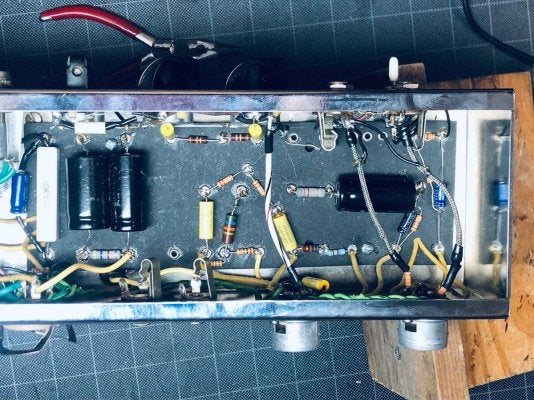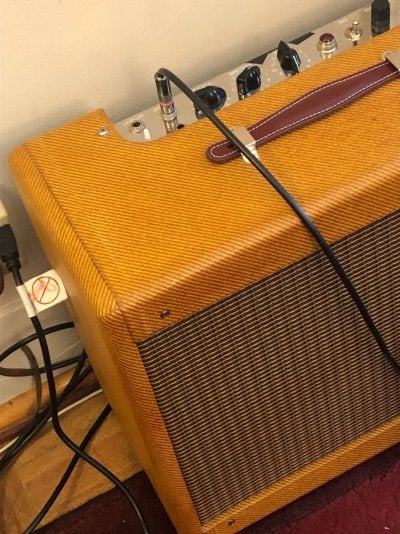rschiller
Tele-Meister
Built my first amp, naturally a 5E3. (Has everyone and their grandmother built a 5E3?) I used many of Gerald Weber's ideas. I'm attaching images of the Mojotone cabinet which I finished using 2 coats of amber shellac and then 4 coats of satin lacquer. The cabinet tone is a bit dark but is close in appearance to an original clean 1958 5E3 I have.
The amp tone is comporable to two 1958 5E3s I have though mine has almost no 60 cycle hum.
I started brushing the shellac but found applying with a clean towel better. For those that have done cabinets before:
- Is it better to apply a lacquer sealer coat first? I believe that would more easily even out the shellac. And I'm thinking the amber shellac may benefit, at least on the first coat, by going 50/50 with denatured alcohol.
- Did Fender just use spray on lacquer and the tone darkened over time? Or in the Tweed era did they darken with amber shellac or a toner in the lacquer
The amp tone is comporable to two 1958 5E3s I have though mine has almost no 60 cycle hum.
I started brushing the shellac but found applying with a clean towel better. For those that have done cabinets before:
- Is it better to apply a lacquer sealer coat first? I believe that would more easily even out the shellac. And I'm thinking the amber shellac may benefit, at least on the first coat, by going 50/50 with denatured alcohol.
- Did Fender just use spray on lacquer and the tone darkened over time? Or in the Tweed era did they darken with amber shellac or a toner in the lacquer




